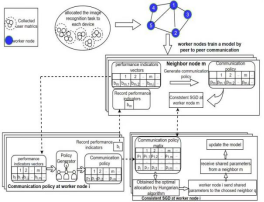Recently, Professor Zhao Jia's team from the School of Computer Technology and Engineering published a research paper titled "ADAMT: Adaptive Distributed Multi-Task Learning for Efficient Image Recognition in Mobile Ad-Hoc Networks" in the top AI journal Neural Networks (DOI: https://doi.org/10.1016/j.neunet.2025.107316), professor Zhao Jia being the first author, and Associate Professor Ding Yan the corresponding author.


Mobile Ad-hoc Networks (MANETs) challenge traditional distributed learning methods due to dynamic topology, resource limits, and highly heterogeneous data. To tackle these challenges, the research team proposed ADAMT, an adaptive distributed multi-task learning framework for lightweight mobile devices. It combines distributed learning, deep hashing, and adaptive communication mechanism to capture global data structures and node specifics that traditional methods are incapable of capturing. ADAMT coordinates local model training and global parameter sharing, achieving fast convergence and high efficiency in multi-task image recognition. Experiments suggest it excels in accuracy, communication efficiency, and model generalization, offering a decentralized learning solution for mobile environments.

Neural Networks is a leading international journal in computer science and AI, focusing on neural networks and deep learning. It's ranked as a Zone 1 TOP journal in computer science by the Chinese Academy of Sciences. As the official journal of INNS, ENNS, and JNNS, it has significant influence in the field of neural modeling.


